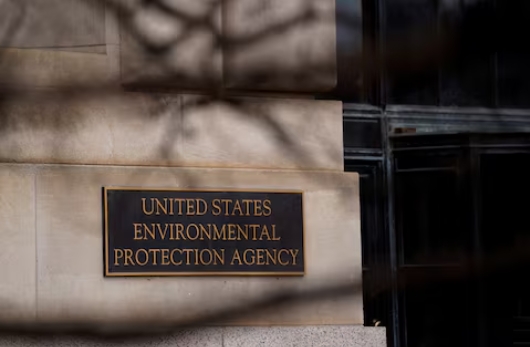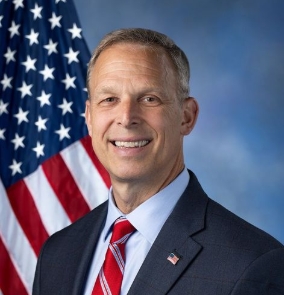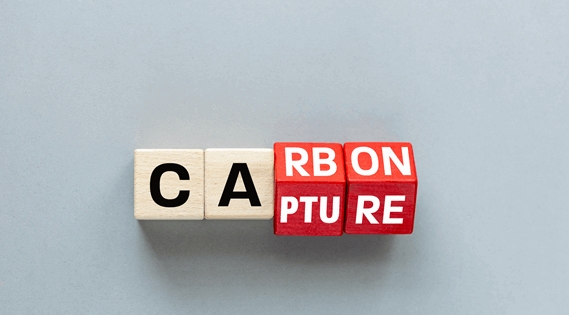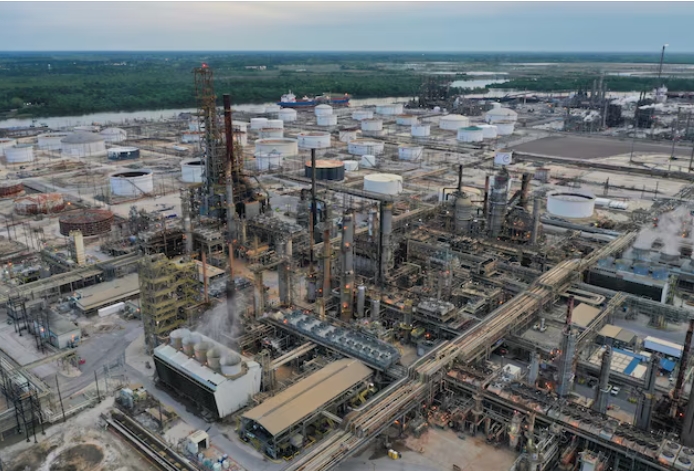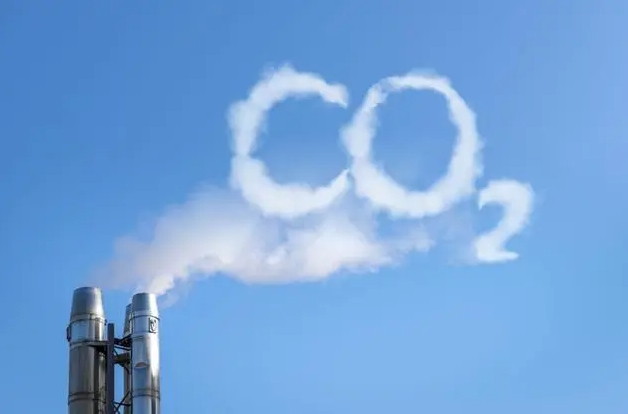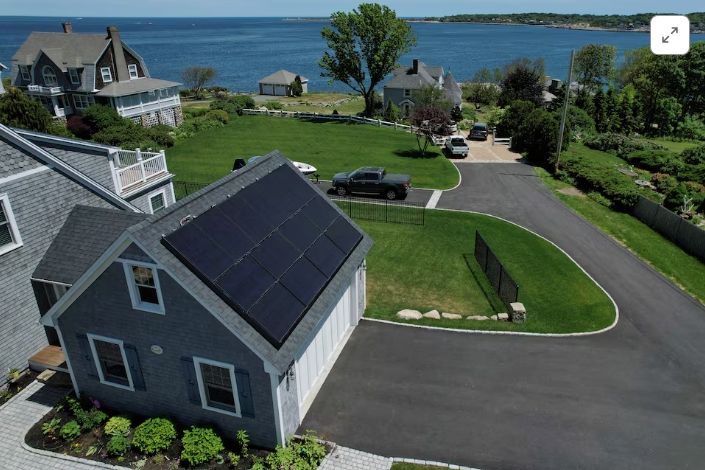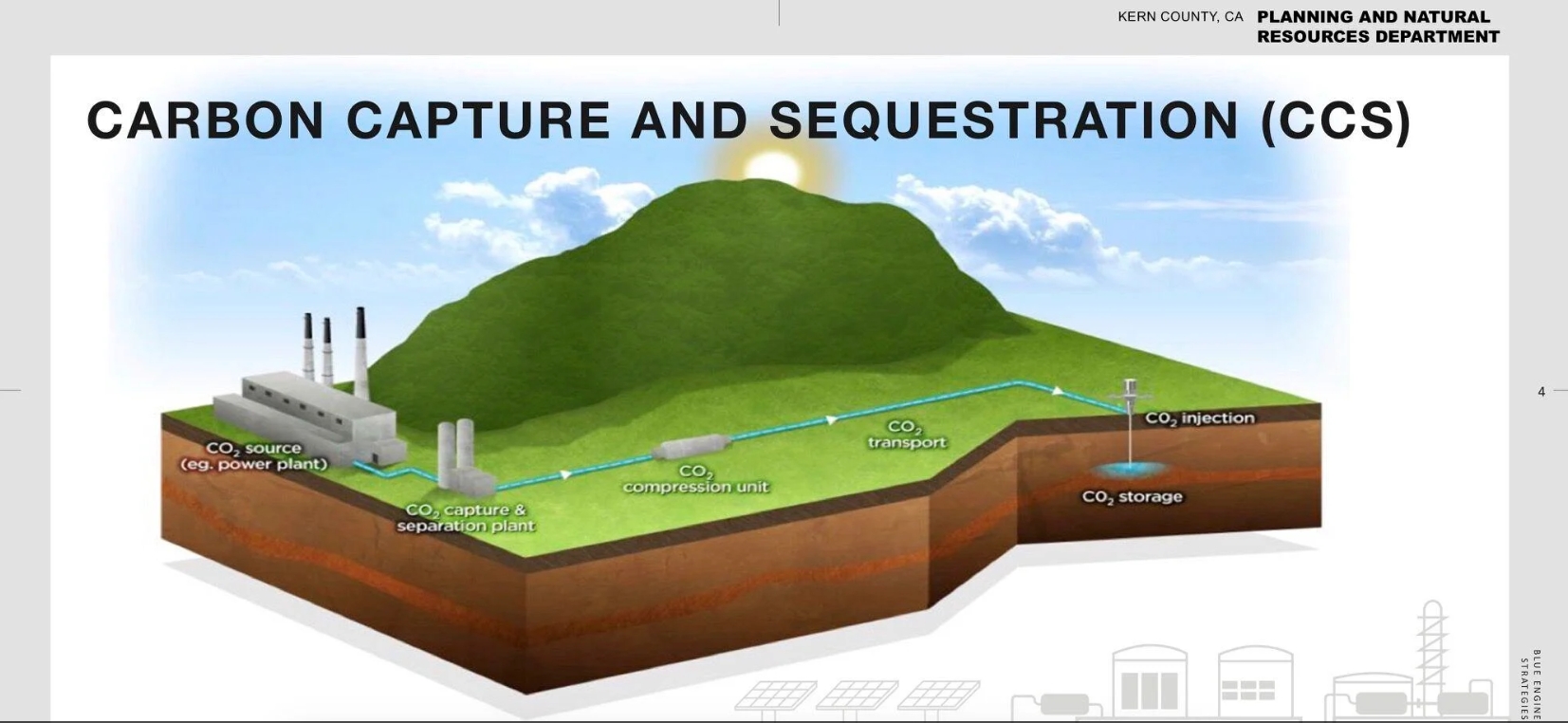As thousands of acres of Iowa farmland are eyed as possible sites for solar farms, a research project is getting underway to explore a new crop that could co-exist with this burgeoning source of power: carbon sequestration.
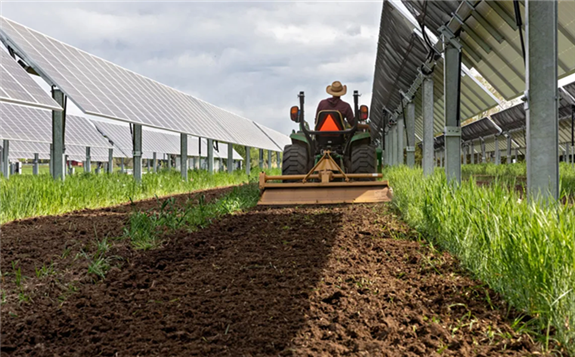 A community solar farm and agrivoltaic research project in Colorado. In the Midwest, an Iowa experiment aims to maximize the carbon capture potential of farmland solar sites. Credit: Werner Slocum / NREL
A community solar farm and agrivoltaic research project in Colorado. In the Midwest, an Iowa experiment aims to maximize the carbon capture potential of farmland solar sites. Credit: Werner Slocum / NREL
The state’s economic development office last month awarded $297,000 to an environmental consultant to create a business model “for monetizing carbon capture on solar energy farms.”
Although solar energy production and “carbon farming” exist independently, the consultant, Mike Fisher, said he didn’t think they’ve been combined, as he has proposed. He will test his theory that the right combination of crops could stash significant amounts of carbon in the ground while enhancing the soil’s fertility. Both the landowner and the solar developer could benefit, he said, from the sale of credits for the sequestered carbon and the enhancements to the soil.
The most common Midwestern crops — corn and soybeans — don’t sequester much carbon because they put most of their energy into producing above-ground “fruits,” said Randy Jackson, an agronomy professor at the University of Wisconsin. Perennials, which plow much more of their energy into roots, stash more carbon as a result. Pasture grasses, such as brome, direct carbon into just the top 12 inches or so, Jackson said. Prairie grasses, by growing roots that tunnel several feet into the ground, stash the carbon for the longer term.
Iowa has been a leading ethanol and wind energy producer for many years, and now is seeing growth in solar development. And in recent years, the state’s economic development authority has been investing research funds in new energy technologies including battery storage, hydrogen, and, now, carbon sequestration.
In June, Gov. Kim Reynolds appointed a Carbon Sequestration Task Force to recommend to the Iowa Legislature policies that could help to build a carbon sequestration industry in the state. The task force held its first meeting last month.
“We are always looking for that new project idea that could have a good impact for the state and our ratepayers,” said Dan Nickel, vice chair of the board of the Iowa Energy Center, the state office that funded Fisher’s pilot project. “The board tries to fund projects where there might be a risk, but is also really good potential.”
Fisher is pursuing his experiment on a seven-acre brownfield site in Perry, Iowa. Alliant Energy, one of the state’s two major electric utilities, is developing a 1-megawatt solar array that it expects will begin producing power sometime in 2022. The city will receive about $45,000 in rent each year from Alliant. The utility will own the power and would receive any proceeds from selling carbon that is sequestered on site.
Fisher aims to test three plant mixes to determine which one sequesters the most carbon. He is considering rye, a mix of prairie species and a combination of flowers that attract pollinators. He’s still refining the particulars with two science professors at Drake University in Des Moines.
Students from Drake will measure the amount of soil carbon before and after the planting regimens. An outside party will verify the students’ measurements. Any change in the soil carbon level may not be apparent for a few years, he said.
Big questions remain about the ability of agricultural land to absorb and retain carbon, according to Michael Castellano, a soil scientist at Iowa State University who has investigated the impact of different cropping systems on soil carbon content. He professed to be “not very excited” about soil’s ability to sequester large amounts of carbon given certain planting regimens.
“Sometimes it works, and sometimes it doesn’t,” he said. “The science isn’t there. Even the idea that restoring a corn/soybean field to prairie will increase carbon, is not guaranteed.”
It is true that prairie soil in the past contained much more carbon than tilled soil does today, Castellano said. Before Europeans arrived and began tilling it, prairie soil was about 3% carbon, Castellano said. The average of farmed soil now is closer to 1%.
“We can get to 3% if we manage like the pre-Europeans, but we don’t know how to manage the land like the natives did.”
Storing the carbon is one challenge. The other is finding a buyer for the accompanying carbon credits. Enterprises such as IndigoAg and TruCarbon are providing an array of services aimed at facilitating carbon market transactions.
TruCarbon, launched in February by Land O’ Lakes, the Minnesota-based dairy cooperative, advises farmers on how to sequester more carbon through measures such as planting an overwintering cover crop, and no-till planting. It takes measurements to determine whether additional carbon is, in fact, being sequestered, and finds a buyer for the carbon credits.
Large corporations with ambitious clean-energy goals are the major market so far for agricultural carbon credits, Fisher said. TruCarbon made its first deal earlier this year with Microsoft, which agreed to purchase up to $2 million in carbon credits through TruCarbon.
Although he estimated the current price for agricultural sequestered carbon hovers at or below a very modest $15 or $20 per ton, Fisher believes the price – and the interest in the farm community – is likely to increase, especially if Congress approves a subsidy for sequestered carbon.
There is interest in Washington D.C. In an April address to Congress, President Joe Biden called soil “the next frontier of carbon innovation.”
The infrastructure bill and reconciliation package before Congress would achieve about 8% of projected carbon reductions by 2030 by sequestering carbon in farmland and forests, according to analysis by the office of Sen. Chuck Schumer, D-N.Y.
Fisher believes that a stable price of at least $35 per metric ton could persuade more landowners to adopt more carbon-sequestering land management techniques.
“If a farmer is going to change management practices,” Fisher said, “they need to be assured as to what price they might obtain year in and year out.”
